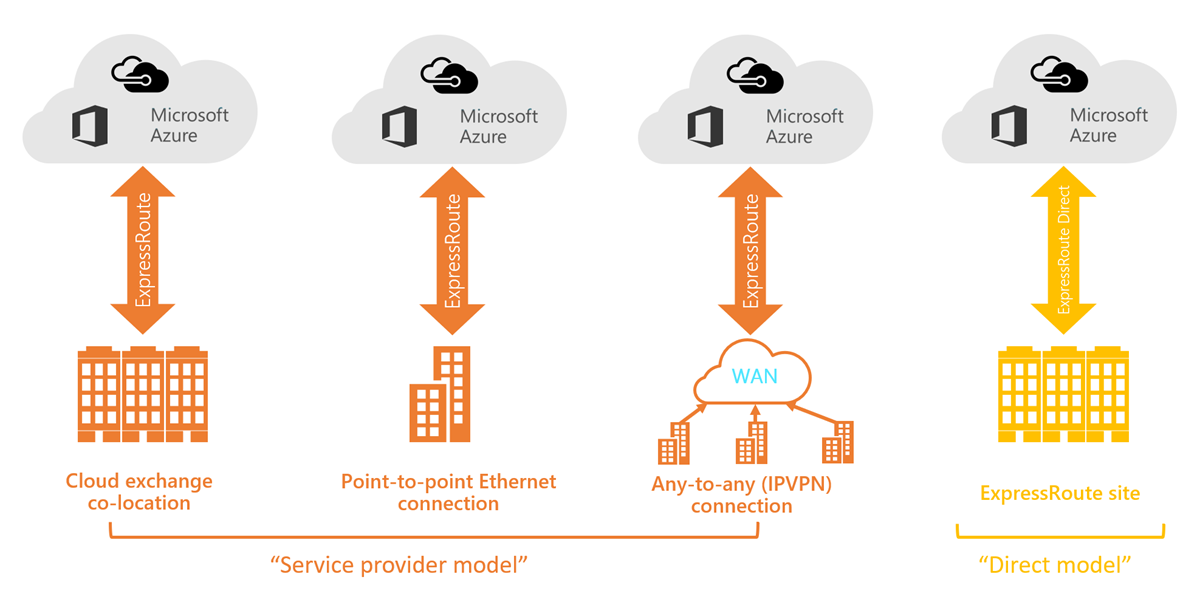ExpressRoute connectivity models
ExpressRoute allows you to create a connection between your on-premises network and the Microsoft cloud in four different ways, CloudExchange Colocation, Point-to-point Ethernet Connection, Any-to-any (IPVPN) Connection, and ExpressRoute Direct. Connectivity providers might offer more than one connectivity models. You can work with your connectivity provider to pick the model that works best for you.

Colocated at a cloud exchange
If you're colocated in a facility with a cloud exchange, you can request for virtual cross-connections to the Microsoft cloud through the colocation provider’s Ethernet exchange. Colocation providers can offer either Layer 2 cross-connections, or managed Layer 3 cross-connections between your infrastructure in the colocation facility and the Microsoft cloud.
Point-to-point Ethernet connections
You can connect your on-premises datacenters or offices to the Microsoft cloud through point-to-point Ethernet links. Point-to-point Ethernet providers can offer Layer 2 connections, or managed Layer 3 connections between your site and the Microsoft cloud.
Any-to-any (IPVPN) networks
You can integrate your WAN with the Microsoft cloud. IPVPN providers (typically MPLS VPN) offer any-to-any connectivity between your branch offices and datacenters. The Microsoft cloud can be interconnected to your WAN to make it appear like any other branch office. WAN providers typically offer managed Layer 3 connectivity. ExpressRoute capabilities and features are all identical across all of the above connectivity models.
Direct from ExpressRoute sites
You can connect directly into the Microsoft global network at a peering location strategically distributed across the world. ExpressRoute Direct provides dual 100-Gbps or 10-Gbps connectivity that supports Active/Active connectivity at scale.
Next steps
- Learn about ExpressRoute connections and routing domains. See ExpressRoute circuits and routing domains.
- Learn about ExpressRoute features. See the ExpressRoute Technical Overview
- Find a service provider. See ExpressRoute partners and peering locations.
- Ensure that all prerequisites are met. See ExpressRoute prerequisites.
- Refer to the requirements for Routing, NAT, and QoS.
- Configure your ExpressRoute connection.
Feedback
Coming soon: Throughout 2024 we will be phasing out GitHub Issues as the feedback mechanism for content and replacing it with a new feedback system. For more information see: https://aka.ms/ContentUserFeedback.
Submit and view feedback for